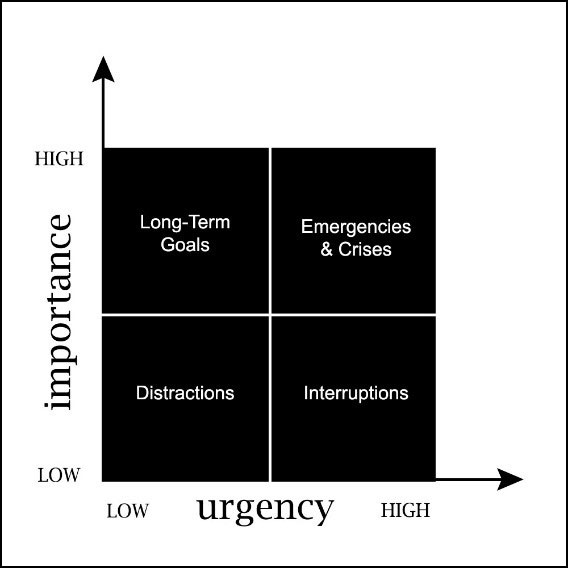Have ‘enough hours in the day’ with these 4 steps
And goal setting isn’t one of them.
Do you ever feel like time disintegrates like sand falling between your fingers? Do you find yourself thinking “I wish I had more time to get everything done”? You’re not alone! Nor are you alone in living in a world defined by time. Every minute that passes for you also passes for your colleagues, friends and family. The same day, week, year that passes is the same for everyone, and they were the same for mastermind entrepreneurs Richard Branson and Elon Musk.
So how do some people seem to be superhuman in their ability to be powerfully productive, achieving things that some of us dare only to dream of? These people are masters of leveraging their time to full capacity.
Like many of us in the business world, you’ve probably committed to and can check off everything on the time management list of:
- Time management apps
- Wall work planner
- Diary with work organiser
- Time management course
- Realising none of the above helped you achieve everything you needed to do so you tried working into the night and across weekends to ‘just get stuff done’. Sure, you may have made some progress with that tactic, but we all know it can only be sustainable for a short period of time for genuine productivity. You could work a consistent 60hr week, but that doesn’t result in being effectively productive.
The hard news not many of us are willing to hear, take on board, develop some self-awareness around, is that until you actually start to take time seriously, managing time will always be an uphill battle. Read that again.
Step 1 – Become aware
Sounds simple, but it’s certainly not an ‘obvious’ step. And it’s the most critical.
Just in case you missed it – the hard news not many of us are willing to hear, take on board, develop some self-awareness around, is that until you actually start to take time seriously, managing time will always be an uphill battle.
We need to know what the cause of the problem is to know what the solution is. As Albert Einstein famously said, “If I had an hour to solve a problem, I’d spend 55 minutes thinking about the problem and 5 minutes thinking of solutions.” This here, is the key to successful time management, which leads to brilliant productivity. By committing to a little self-awareness and identifying what our time management problem is, we’ve successfully implemented step one of putting an ongoing productivity plan into place.
Step 2 – Track using the 4 quadrants
Ever hear yourself say “I’m so busy!”? The important thing here is to ask yourself, “Doing what?”. Getting stuff done, doesn’t mean getting the right stuff done.
Stephen Covey highlights the importance of identifying ‘urgent’ vs ‘important’ tasks in his book “7 Habits of Highly Effective People”. By identifying what activities and tasks you spend time on and allotting them to one of the 4 quadrants below, you start to create a picture of where you’re spending most of your time (time management) and how appropriate that is in achieving what you need to achieve (productivity).
Are you spending time on activities that are important but non-urgent (long-term goals), important and urgent (emergencies and crises), urgent but not important (interruptions), or non-urgent and not important (distractions).
 By keeping a time log (hang in there with me for a minute!) you start to understand where your ‘busy-ness’ is focused. To gain a useful perspective, I encourage people to keep a log for at least a couple of weeks. Just bring up a digital calendar and make some notes hour by hour. I know it sounds mundane, but let’s turn your perspective around so that you can actually get some value out of this critical step – it will serve you for a very long time to come. Think of your 60 seconds of writing per hour as a trigger to take a break. Taking regular breaks throughout the day is proven to increase productivity. So set your hourly timer for the next couple of weeks and spend a couple of minutes every hour writing down what you did, noting if it was low or high importance with low or high urgency.
By keeping a time log (hang in there with me for a minute!) you start to understand where your ‘busy-ness’ is focused. To gain a useful perspective, I encourage people to keep a log for at least a couple of weeks. Just bring up a digital calendar and make some notes hour by hour. I know it sounds mundane, but let’s turn your perspective around so that you can actually get some value out of this critical step – it will serve you for a very long time to come. Think of your 60 seconds of writing per hour as a trigger to take a break. Taking regular breaks throughout the day is proven to increase productivity. So set your hourly timer for the next couple of weeks and spend a couple of minutes every hour writing down what you did, noting if it was low or high importance with low or high urgency.
Many of us find that most of our time is spent in the not urgent and not important quadrant of distractions. When we’re stuck in this quadrant, we’re in danger of the procrastination beast. We end up scrolling socials, watching Netflix or shopping mindlessly online instead of working towards our low urgent, highly important long-term goals.
When you continue to look back over your observations you’ll get to see which quadrant all your activities fall into. What did you focus on today? How much of it fell under the not urgent but important quadrant of long-term goals? To achieve them, you need to be focussing on realigning activities to ensure you’re doing at least something each day that contributes to long-term goals.
Realistically, yes of course you may be frequently interrupted or pulled in different directions. We can’t completely eliminate interruptions, but when you do, then YOU get to say to what extent. Just like you get to decide how much you want to achieve your goals and therefore how much time you will spend on them and their related activities that will lead to your own productivity and success.
It’s your choice. Their agenda or yours? Remember “Either you run the day, or the day runs you” – wise words from Jim Rohn.
Step 3 – Shine a flashlight on your habits
Highlight your identified areas for improvement, weaknesses and bad ‘habits’ (they’ll be there if you’ve been brutally honest with how you’re spending your time). Really illuminate them. Write them down and make them stand out.
By writing them down and making them visible, you’re forcing yourself to become aware of them versus just ‘thinking’ about them or being mindful of them, which will unfortunately ensure you revert back to those unproductive habits again over time. You don’t want that after investing valuable time to this point in a worthwhile process!
Don’t feel bad about it. If you never became aware of your time wasting or inefficient or unproductive behaviours, which eventually turn into unproductive habits, you’d never be in the stellar position you’re in now – the opportunity to change them!
Step 4 – Calculate the cost
You’ve identified where you’ve been spending your time, understood where you’re losing balance between the urgent and important stuff, and had some ‘a-ha’ moments around some less than desirable habits. Instead of trudging along and being determined to ramp up the willpower and ‘change your ways’, it’s time to calculate the actual cost of subpar time management.
(Warning: Willpower never works long term, but that’s a whole other article we don’t have time to delve into today. See, it works! There’s my low urgency low importance task being identified as a distraction right now).
As we continue steps 2 and 3 over longer periods of time, we reap the benefit of understanding where we’re wasting time instead of getting things done and achieving what we actually want to achieve. You may have discovered you’re a fireman (putting out fires for your community all day and not getting to your own priorities), or that you’re a socialite (finding energy from communicating with others, going out to lunch and spending just that little bit too much time having a chat over coffee), or that you’re the team’s ‘go to’ person for any problem or thing that needs to be done (because you always ‘solve’ the problems and ‘do’ the things!). Or you’ve uncovered some other identities hampering your own productivity goals.
And before you panic about ‘not’ continuing to live up to your assumed roles above, ask yourself, “What would happen if I stopped doing these things?” and put them into context of the cost of continuing to do them. So what would happen? Write it down. If the world really does fall apart or you identify a catastrophe, run it past someone else for a different perspective on whether or not your belief is really true. If nothing bad happens and you realise other people need to reach toward being responsible and accountable for themselves, then let them go ahead and do that thing or solve that problem. And you get onto yours.
The key question, after all of this brilliant detective work has been completed, is – “At what cost to you?” What financial, mental, physical or emotional costs have you paid? Has there been a cost to your wellbeing? Write them down. Again, don’t just think about them and consider them. Write those costs down. By doing that, you’ll start to realise just how costly your time management (or discovered lack thereof) has been, which will ultimately provide you with a ‘why’ on how important YOUR goals are.
If you’re not sure where to start focusing on your own time management or helping your team with workplace time and productivity, we already have a plan for you. We’ve done it before (lots!) and can take the pain out of the ‘doing’.
Sound great? Unpack more than the usual tips and habits around great time management by clicking here. You’ll even get to view a short video sneak peak into our Time Management sessions with our own highly sort after speaker and trainer Michael Harrington.
Contact Us





 By keeping a time log (hang in there with me for a minute!) you start to understand where your ‘busy-ness’ is focused. To gain a useful perspective, I encourage people to keep a log for at least a couple of weeks. Just bring up a digital calendar and make some notes hour by hour. I know it sounds mundane, but let’s turn your perspective around so that you can actually get some value out of this critical step – it will serve you for a very long time to come. Think of your 60 seconds of writing per hour as a trigger to take a break. Taking regular breaks throughout the day is proven to increase productivity. So set your hourly timer for the next couple of weeks and spend a couple of minutes every hour writing down what you did, noting if it was low or high importance with low or high urgency.
By keeping a time log (hang in there with me for a minute!) you start to understand where your ‘busy-ness’ is focused. To gain a useful perspective, I encourage people to keep a log for at least a couple of weeks. Just bring up a digital calendar and make some notes hour by hour. I know it sounds mundane, but let’s turn your perspective around so that you can actually get some value out of this critical step – it will serve you for a very long time to come. Think of your 60 seconds of writing per hour as a trigger to take a break. Taking regular breaks throughout the day is proven to increase productivity. So set your hourly timer for the next couple of weeks and spend a couple of minutes every hour writing down what you did, noting if it was low or high importance with low or high urgency.




